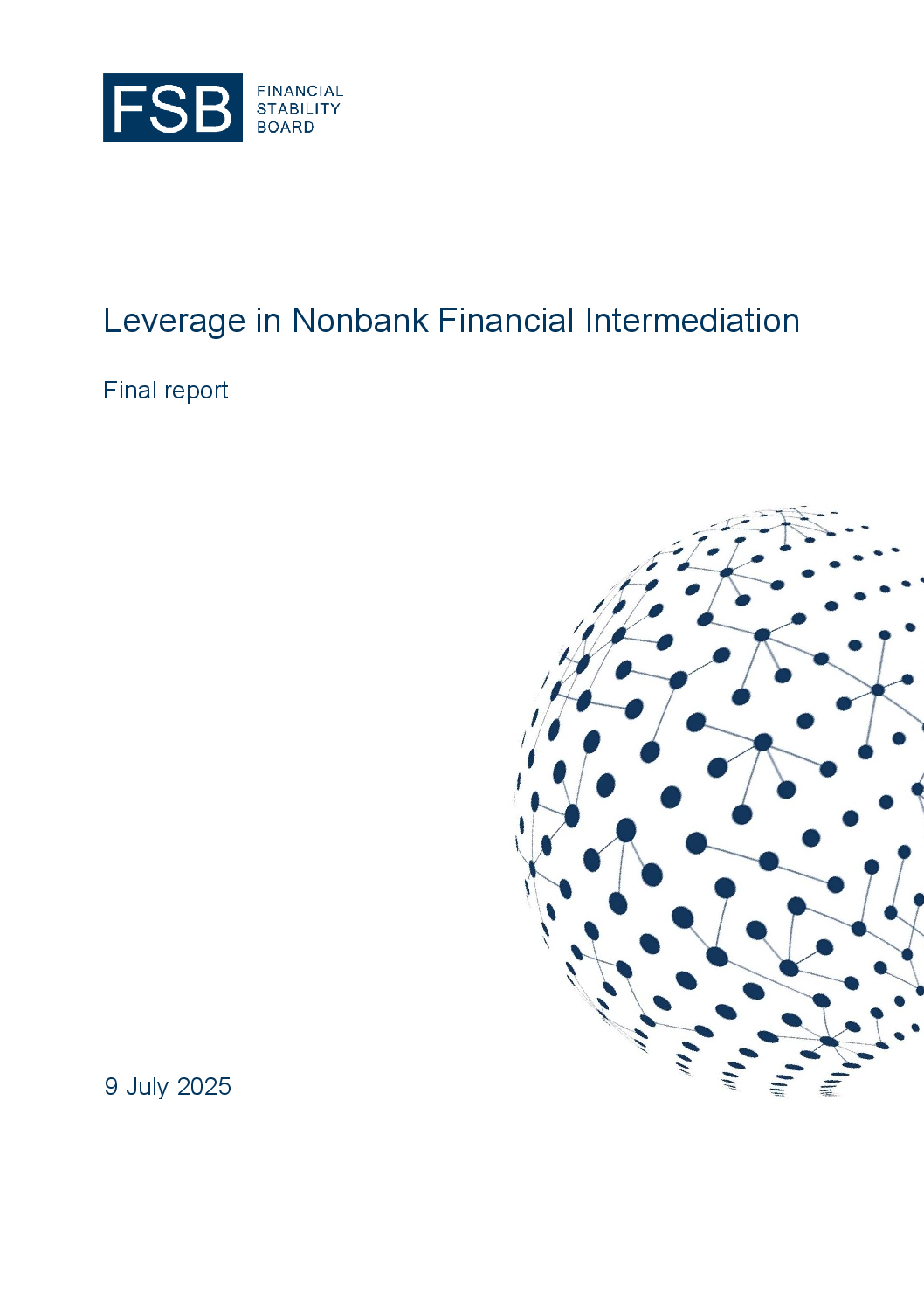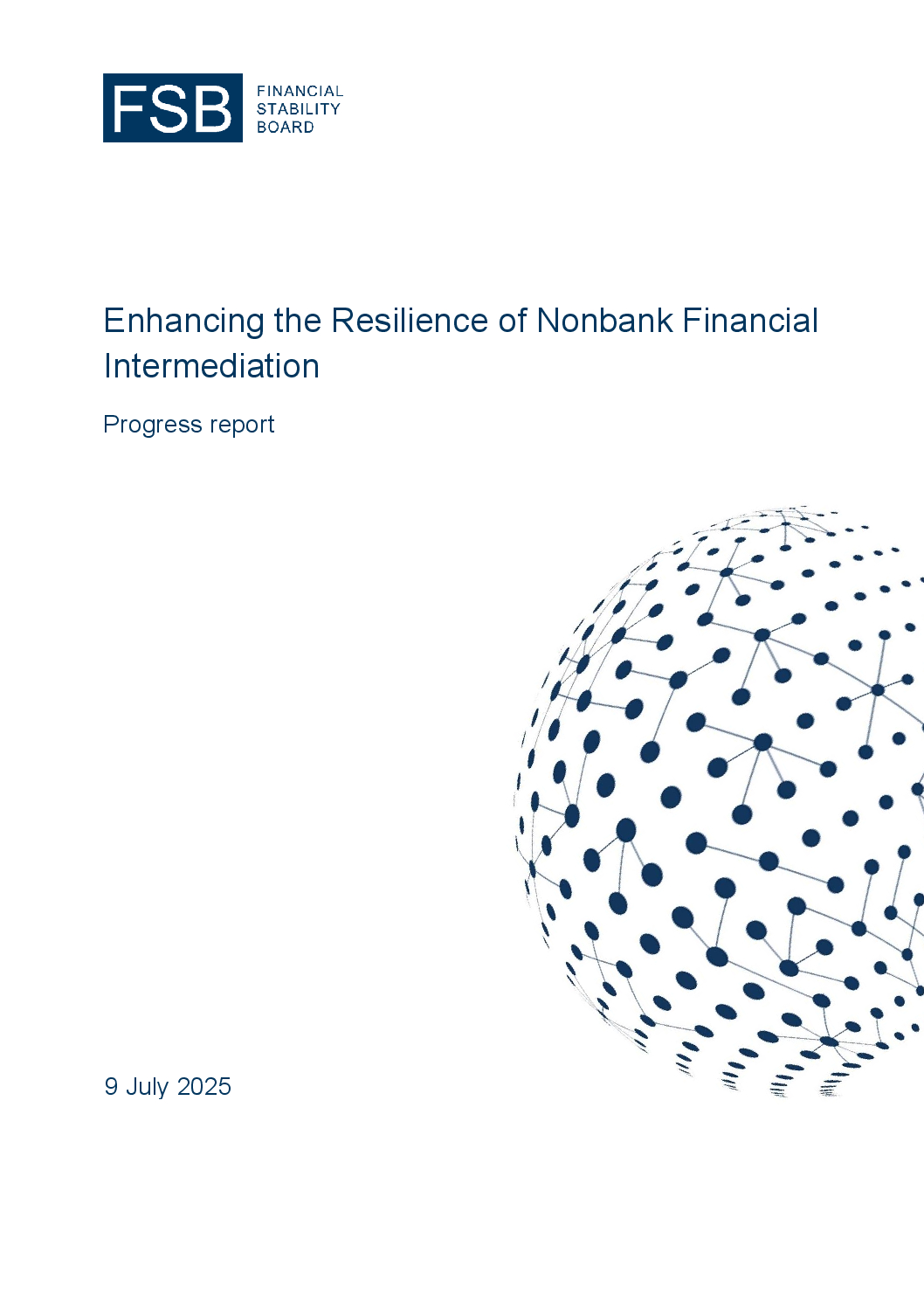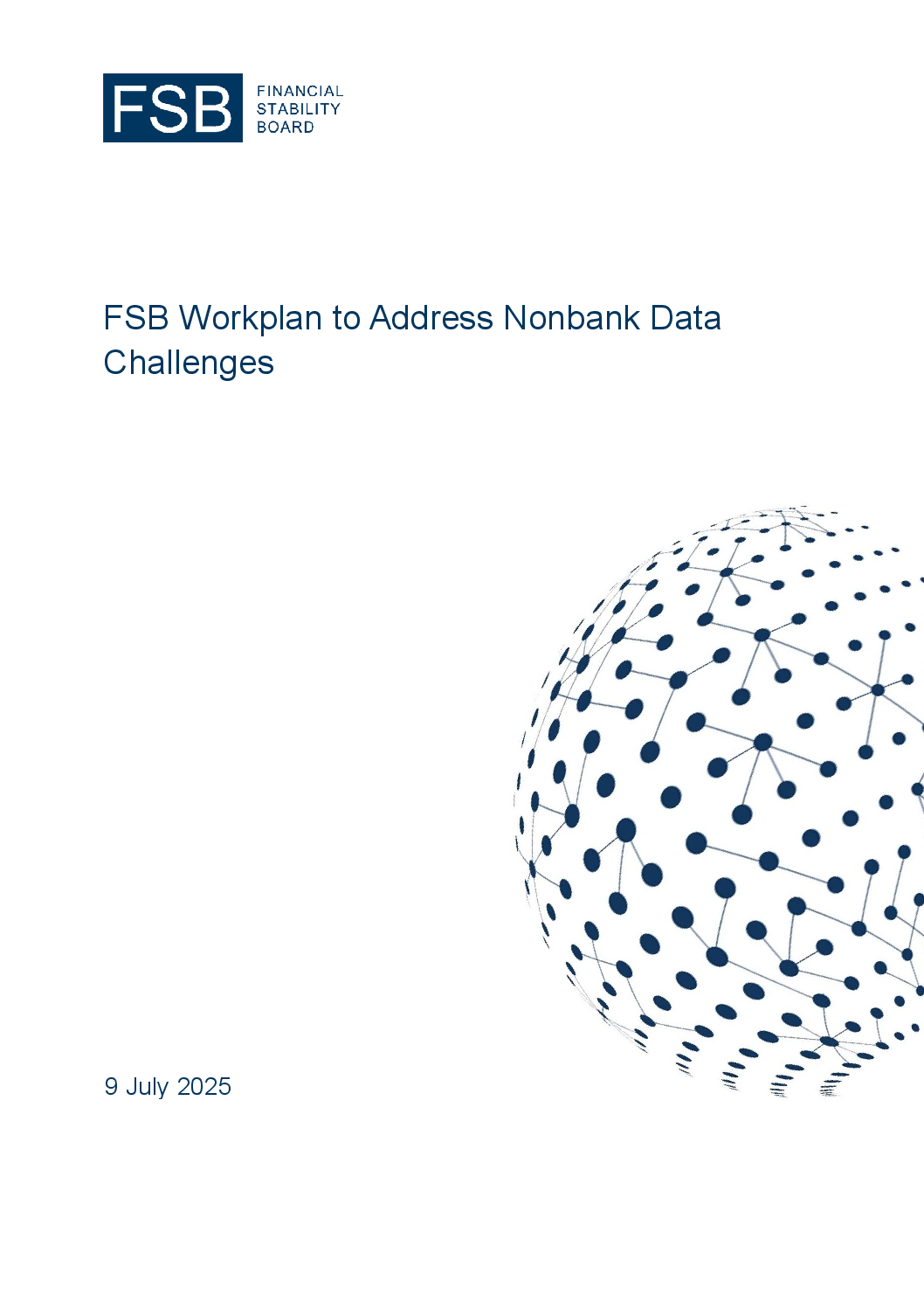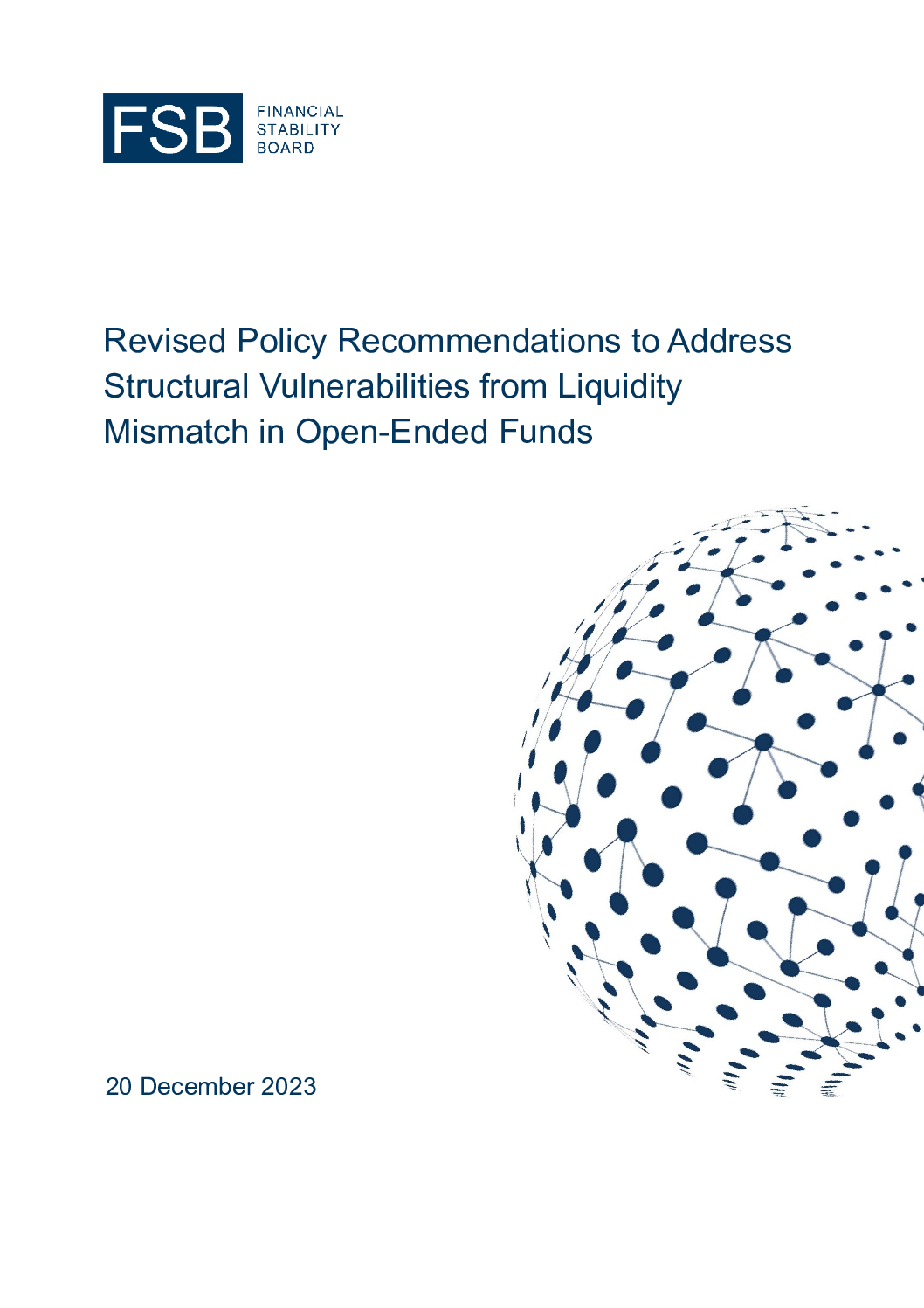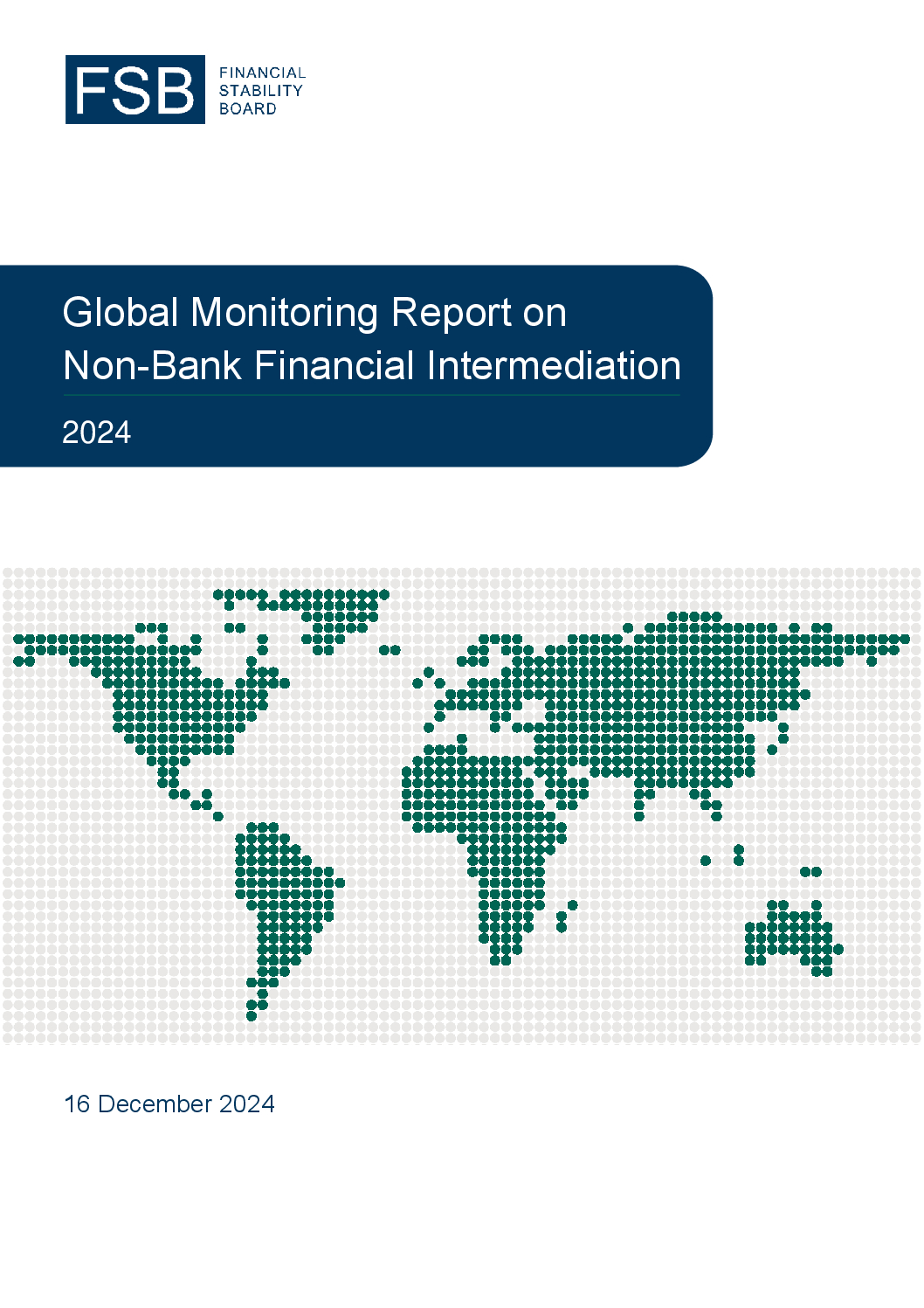The views expressed in these remarks are those of the speaker in his role as Secretary General of the FSB and do not necessarily reflect those of the FSB or its members.
Introduction
Hello everyone,
Thank you for joining this virtual seminar. Let me begin by expressing my gratitude to the Program on International Financial Systems for organising this event and for assembling such an impressive lineup of speakers. The breadth of expertise in today’s seminar is a testament to the importance of nonbank financial intermediation (NBFI) in the global financial system.
Events like these give us the opportunity to step back from our day-to-day work and to engage in a deeper dialogue about the challenges and opportunities we face. They allow us to share insights, exchange ideas, and reflect on the progress we have made while also identifying the work that still lies ahead.
The topic we are here to discuss, leverage in the nonbank financial sector, is one of the most pressing issues in financial stability today. It is a subject that has been central to the Financial Stability Board’s agenda in recent years, and it will continue to demand our attention as the financial system evolves.
What’s in a name?
Before we delve into the substance of today’s discussions, I want to take a moment to reflect on the term “nonbank financial intermediation.” For years, we referred to this sector as “shadow banking,” a term that evoked opacity and risks. While it served its purpose at the time, its negative connotations diverted attention from the fundamental role that nonbanks play in the global financial system. Today, we use the term “nonbank financial intermediation” to better capture the wide range of entities and activities that make up this critical part of the financial system.
But even the term “NBFI” has its limitations. Using a single term may suggest that NBFI is a monolithic entity, when in reality, the sector is anything but. It encompasses everything from money market funds (MMFs) and open-ended funds (OEFs), to hedge funds, pension funds, insurance companies, and more. These entities perform different functions, operate under different business models, and therefore the vulnerabilities and the risks they may present to the financial system are equally varied.
While the term is a useful shorthand, at the FSB, most of our work takes a more targeted approach, focusing on specific entities and activities that fall under the umbrella term NBFI but where vulnerabilities are most pronounced and where risks to financial stability are most significant. The shift to this more targeted approach reflects the maturity of our collective understanding of NBFI and the need for a more nuanced approach to addressing its challenges.
By dissecting NBFI into its constituent parts and looking at the behaviour of those parts during stress, we can better identify potential threats to financial stability and develop policies that are appropriately designed to the specific vulnerabilities and risks involved.
Why we care about NBFI
Before talking about the FSB’s work in this area, let me spend a few minutes highlighting why the FSB devotes so much time and effort to studying NBFI. The answer is simple: because it matters.
- NBFI is big
The nonbank sector has grown significantly since the global financial crisis. As of 2023, it accounted for nearly half of global financial assets, amounting to approximately $240 trillion. This growth has been driven by a range of factors, including regulatory changes, the prolonged low-interest-rate environment, and technological innovation. Our flagship NBFI publication, the Global Monitoring Report on Non-Bank Financial Intermediation is a rich source of information on trends and developments in the nonbank sector.
- NBFI is everywhere
NBFI is deeply embedded in the global financial system and intertwined with banks and central counterparties. It provides credit to households and businesses, liquidity to markets, and investment opportunities to savers. It is a vital source of financing for the real economy and plays a critical role in supporting economic growth.
- NBFI is increasingly critical to the functioning of the financial system
The importance of NBFI extends beyond its size and reach. The sector is integral to the functioning of the financial system, given the increasingly large role nonbank institutions play in core financial markets and the broader economy. But with this importance comes responsibility. When vulnerabilities in the nonbank sector go unaddressed, they can amplify shocks and destabilise the financial system.
Recent history provides several stark examples of how vulnerabilities in NBFI can lead to or amplify market turmoil. Let me take you through a few recent examples:
Runs on Money Market Funds (March 2020): At the onset of the COVID-19 pandemic, MMFs faced significant liquidity pressures as investors sought to redeem their holdings amid heightened uncertainty. These redemptions created a feedback loop, amplifying stress in short-term funding markets and necessitating central bank intervention.
Archegos Capital Management (March 2021): The collapse of Archegos highlighted the risks associated with leverage and concentrated exposures within the nonbank sector. The event led to significant losses for counterparties and raised questions about the adequacy of risk management practices of prime brokers, as well as that of bilateral counterparty disclosure between leveraged entities and their leverage providers.
Liability-Driven Investment (LDI) strategies in the UK (September 2022): In September 2022, a sharp rise in gilt yields exposed vulnerabilities in the investment strategies of some UK pension funds, leading to severe liquidity challenges. The resulting market turmoil required intervention by the Bank of England to restore market stability.
Asset swap spread trade unwinding in the US (April 2025): In April of this year, the unwinding of certain relative value trades by leveraged nonbank investors added to the upward pressure on US Treasury bond yields, highlighting the need to closely monitor leveraged trading strategies, especially when they are crowded or concentrated, as well as the broader issue of interconnectedness.
Each of these episodes was different in nature, but they shared a common thread of vulnerabilities in the nonbank sector that amplified stress and propagated shocks across the financial system.
Because of the fundamental importance of this sector, because it has grown, and because recent periods of stress have highlighted areas where the resilience of this sector can be strengthened, the FSB has put a lot of effort into work on NBFI. Let me highlight a few examples of the broad range of work the FSB is doing in this area, before I hone in on leverage, the main topic of today’s seminar.
Money Market Funds (MMFs):
The March 2020 market turmoil underscored the vulnerabilities of money market funds to sudden and disruptive redemptions. The scale and speed of the redemptions were unprecedented, and they highlighted the need for further reforms.
In response, in 2021, the FSB issued policy recommendations to enhance the resilience of MMFs, focusing on measures to address liquidity mismatches and reduce the risk of runs. We have been closely monitoring the implementation of these reforms across jurisdictions and, while progress has been made, it has been uneven among jurisdictions so far. We are currently discussing plans to assess the effectiveness of MMF reforms.
Open-Ended Funds (OEFs):
Liquidity mismatches in open-ended funds remain a concern, particularly when investor redemption terms and conditions are not aligned with the liquidity of the underlying assets and when a first-mover advantage exists that can amplify investor redemption requests.
In 2023, the FSB revised its policy recommendations to address these vulnerabilities, emphasising the importance of anti-dilution liquidity management tools and the need for fund managers to align redemption terms with the liquidity of their assets. We are working closely with IOSCO to operationalise these recommendations through guidance and good practices, and we will continue to monitor their implementation.
Leverage in Sovereign Bond Markets:
Leveraged trading strategies in sovereign bond markets can amplify stress and propagate shocks across the financial system. This was evident, for instance, during the March 2020 turmoil, when leveraged investors unwound positions in response to margin calls, exacerbating dislocations in government bond markets.
The FSB is currently assessing vulnerabilities in government bond-backed repo markets, examining market structures, recent stress episodes, participant roles, bank-nonbank interconnections, concentration areas, and cross-border spillover risks. The findings aim to enhance the monitoring of these vulnerabilities and to support efforts to address NBFI data challenges linked to leveraged trading in sovereign bond markets. I will come back to the issue of data later.
These three efforts reflect the broader shift in our approach to NBFI away from treating the sector as a monolith that I mentioned earlier. We are drilling down into the constituent parts to better understand the unique challenges this complex and diverse sector poses and to develop policies that are appropriately designed and calibrated to the specific risks involved.
FSB Recommendations on NBFI Leverage
Finally, let me now turn to today’s subject. Recognising the risks posed by NBFI leverage, the FSB has developed a set of policy recommendations to enhance the monitoring of NBFI leverage and to address the financial stability risks that it creates. We focused on two key areas:
- First, risks that may arise in core financial markets. These markets are critical to the functioning of the financial system and the real economy; and
- Second, risks that may arise through interlinkages between leveraged nonbanks and systemically important financial institutions that act as leverage providers.
Building on several steps already taken by authorities and the work done by the sectoral standard-setting bodies, our recommendations should be viewed as a package that urges authorities to: have a domestic framework in place to identify and monitor risks in an effective, frequent, timely and proportionate manner; and to select, design and calibrate policy measures that address the risks that they identify in a flexible, targeted and proportionate way.
Before going into more depth on the recommendations, let me stress a few aspects that are important to understand the framing of the policy package, which integrates the need to identify risks to financial stability with the tailoring of the policy response.
- The recommendations are not a one-size-fits all solution.
- The recommendations are addressed to FSB member authorities and focus on markets, entities, and activities where NBFI leverage can create financial stability risks.
- Entities in scope are nonbanks that use either financial or synthetic leverage (including hedge funds, other leveraged investment funds, pension funds and insurance companies).
- Recognising the heterogeneity in the sector and the varying nature of leverage in different jurisdictions, the recommendations provide authorities with flexibility to tailor their policy response to the circumstances prevailing in their jurisdiction.
Turning to the recommendations themselves.
The first three recommendations relate to risk identification and monitoring. For example, we set out the need for authorities to address data challenges in their domestic risk identification and monitoring framework and to collaborate to reduce those challenges that may hinder effective cross-border risk identification and monitoring. We also stress the need to review and enhance public disclosure, as well as to increase transparency, particularly regarding concentration and crowdedness, thereby supporting market discipline.
The fourth and fifth recommendations focus on policy measures to address financial stability risks created by NBFI leverage in core financial markets, such as sovereign bond markets. These measures include: activity-based measures, such as minimum haircuts and initial margin requirements in securities financing transactions backed by government securities; and stricter margin requirements in derivatives markets, particularly for transactions that are not centrally cleared. Promoting the use of central clearing is also a focus. The measures also include entity-based measures, such as imposing direct and indirect limits on the amount of leverage that certain entities can take. An example of this is the yield buffer requirement for British-pound-denominated LDI funds.
For both activity- and entity-based measures, the recommendations include potential measures to address concentration risks, which are particularly prominent in some cases. The objective of these two recommendations is to prompt authorities to consider specific measures – for example, large exposure limits – in case other policy measures do not appropriately mitigate the system-wide risks that large, concentrated exposure can generate.
The sixth and seventh recommendations cover counterparty credit risk management. They recommend that authorities ensure the timely and comprehensive implementation of the recently issued BCBS guidelines on counterparty credit risk for bank leverage providers. In addition, the recommendations ask that authorities review the adequacy of existing counterparty-disclosure practices between leveraged nonbanks and leverage providers and consider developing, possibly in partnership with the industry, mechanisms, standards, or guidelines to enhance the effectiveness of these disclosure practices. Such a public-private partnership could also explore the adoption of technology-based mechanisms that might enable leverage providers to manage risk and verify that counterparty exposures remain within agreed tolerances without compromising the confidentiality of their clients’ proprietary investment strategies or positioning.
The final recommendation asks authorities to engage proactively with their peers to facilitate a coordinated crisis and policy response. The recommendation recognises the important role that cross-border cooperation can play in enhancing the monitoring of risks that can propagate across borders and how we can foster more efficient and aligned policy responses to mitigate regulatory arbitrage and spillovers. Cross-border cooperation is also important to ensure that the framework we have built to enhance the resilience of NBFI is underpinned by effective implementation and robust foundations in terms of data and policy solutions.
Next steps
Nonbank financial intermediation is critical to the global financial system and the global economy. As I highlighted, there have been recent periods of turmoil where parts of that sector did not display the resilience that we would have desired, and the FSB and other standard setters have taken steps to enhance the resilience of this sector. While significant progress has been made, more work is needed to ensure the nonbank sector is resilient. We are joined by people much wiser than I, but before I hand over to them, let me leave you with some thoughts, with the help of Shakespeare, whose wisdom far exceeds my own and whose words often hold a mirror to the challenges and opportunities we face today.
- Be great in act as you have been in thought
With respect to leverage, in the near term, authorities are considering the recommendations and some of them are already taking concrete steps. The FSB is currently discussing plans to organise supervisory discussions on policy measures taken by jurisdictions to address risks created by leverage in NBFI. This could be important to assist in coordinating supervisory issues that have cross-sector implications and advise on and monitor best practice in meeting regulatory standards with a view to ensure consistency, cooperation, and a level-playing field across jurisdictions.
- I will swear to study so, to know the thing I am forbid to know
Critically, we must continue to address data challenges. While we no longer use the term “shadow banking”, the negative connotations of that term hinted at the difficulty that authorities have in understanding the sector owing to the lack of data. The FSB’s recently established task force on nonbank data is working to identify and address gaps in data reporting, to enhance data quality and data use, and to promote data and information sharing among authorities. The test case we launched earlier this year focuses on leveraged trading strategies in sovereign bond markets.
- Our doubts are traitors and make us lose the good we oft might win by fearing to attempt
Also important, we must implement agreed reforms and assess their effectiveness. For money market fund and open-ended fund reforms, this means beginning the process of evaluating their effectiveness. For more recent reforms, like the FSB recommendations on NBFI leverage, this means making best efforts to ensure consistent implementation by FSB members.
- I am as vigilant as a cat to steal cream
Finally, we must remain vigilant to emerging risks. The financial system is constantly evolving, and so too must our approach to safeguarding it. This requires ongoing collaboration among authorities, experts, and market participants, both domestically and internationally. We must adapt our surveillance of the sector as quickly as the sector itself evolves.
I look forward to hearing the discussions.
Thank you.
